As in humans, many rescue dogs experience separation anxiety too.
According the ASPCA, because far more dogs who have been adopted from shelters, have this behavioral problem than those kept by a single family since puppyhood, it is believed that loss of an important person or group of people in a dog’s life can lead to separation anxiety.
Separation anxiety in dogs manifests in various forms including a mysterious appearance, getting nervous when you are about to leave, chewing the corner of an end table when you are out, and/or leaping with excitement when you return.
Sometimes, you may see a bedroom slipper under the kitchen table when you come back home partially or fully destroyed. When your pet is left alone, it may turn mischievous.
There is nothing abnormal about it. However, separation anxiety is not a consequence of mischievous behavior. It is the end result of real stress.
So, let’s take a look inside Canine Separation Anxiety, shall we?
Read on further down this article and you will learn more important information.
How Does Canine Separation Anxiety Creep In?
Separation anxiety in dogs creeps in when it is hyper-attached to the owner. When he is left alone, he gets stressed excessively.
It’s much more than an occasional mournful whimper when you go out or creating some mischief when you are away.
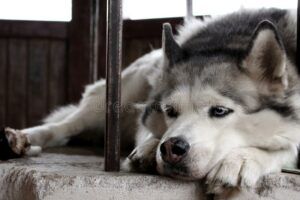 Separation anxiety can be an alarming or irritating condition for both the pet and the owner.
Separation anxiety can be an alarming or irritating condition for both the pet and the owner.
Several owners easily get fed up with this kind of behavior.
If you are a true lover of your dog, you can do many things to get rid of this situation.
Situations that Make Dogs Vulnerable to Separation Anxiety
What makes a dog vulnerable to separation anxiety? If you leave a dog for the first time that is used to being with people, you can find him developing anxiety.
The ownership change can instill a sense of strangeness and fear to cause canine anxiety.
When dogs are left alone at home, they sometimes fear their owner may not return.
This fear is substantiated by the fact that the were abandoned by there previous owner and sense it may occur again.
Another common situation is when moving a dog from a shelter to a home.
Death or absence of a family member and abrupt changes in family schedules are also common situations that can make dogs vulnerable to separation anxiety.
Major Signs of Canine Anxiety
You can come across different types of canine anxiety signs in different dogs. If your dog is really stressed when he is alone, he may often whine to excess.
This is a major symptom of separation anxiety. Some of the dogs keep on howling or barking when they are left alone. Distress and behavioral problems become more evident as anxiety increases.
Your pet may keep on digging and scratching at windows or doors during your absence. These gestures are their futile attempts to reunite with the owner.
They cannot stand separated due to worrisome anxiety. Some may chew things up unnecessarily and keep on digging holes.

Destructive chewing is another common behavior that can be associated with canine separation anxiety.
You can also find anxious pets urinating and defecating even though they have been properly house-trained.
When you are away, your dog may destroy household objects unnecessarily. These behaviors can lead to self-injuries including damaged nails, scraped or cut paws or broken teeth as well.
A dog with separation anxiety often makes efforts to escape from an area where he is confined.
Like expectant dads in the labor room, there are dogs, which walk or trot along a particular path in a fixed pattern when they are separated from owners or kept alone.
The movement can also be in circular patterns or walking back and forth in straight lines.
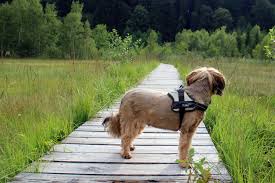
These are the major symptoms that can be linked with canine separation anxiety.
You need to realize that your dog is not going to show up any of these gestures or behaviors if the owner present.
Important Things to Consider Before Deciding on a Treatment Plan
Before start thinking about canine separation anxiety treatment, you need to discuss the issue with your vet to rule out the possibility of any medical issues.
Hormone problems, infections, or other types of health conditions can make dogs vulnerable to accidents in the house. Incomplete housebreaking can be a reason for a dog getting injured.
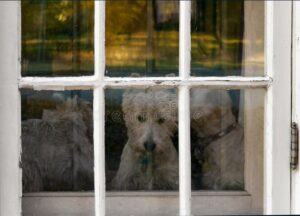
Certain medications can cause accidents. Other behavior problems to be ruled out are submissive/excitement urination, urine marking, juvenile destruction, incomplete house training, boredom, and excessive howling/barking.
You need to make sure that your dog is experiencing separation anxiety before designing a systematic treatment plan.
Canine Separation Anxiety Treatment
Minor separation anxiety in dogs can be handled with minimal efforts. More severe problems need to be dealt with using a careful approach.
How to Treat Minor/Mild Separation Anxiety in Dogs
As a pet owner, you don’t have to make a big deal out of departures and arrivals. It is wise to ignore him for a few minutes before making efforts to calm down.
When you go out, you can keep recently worn clothes that smell like you near your pet.
It is prudent to establish a word of action that you utilize each time you go out that clearly conveys you are going to be back.

For lowering the fearfulness, you can make use of an over-the-counter calming product.
A special treat can be given each time you move out. It should be taken back when you are back.
How to Treat More Severe Canine Separation Anxiety
You can make use of the methods mentioned above while treating for severe separation anxiety in dogs.
However, these efforts must be complemented and fortified with desensitization training. Utilizing positive reinforcement, you can teach your pet the down-stay and sit-stay commands.
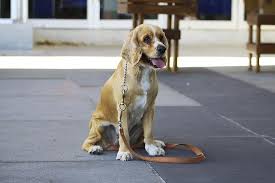
This method of approach assists him in understanding that he can stay calm and cheerful in one place while you move out to another room.
Another effective step is to prepare a safe place to restrict the destructive ability of your pet when you are out.
Good examples of safe places are dirty laundry to provide a relaxing scent cue, and areas which consist of busy toys for distraction.
You can also consider confining your pet loosely in a room with some toys and a window. Complete isolation is not going to work for a dog that is suffering from separation anxiety.
Seek Professional Help if You Find it Tough to Handle Separation Anxiety
If you are finding it tough to handle severe separation anxiety, you need to seek professional help.
Desensitization and counter-conditioning are the two popular methods to solve severe separation anxiety in dogs.
These procedures can be tricky to perform. You have to eliminate the fear from the procedure to get optimized results.
The fear factor can make things complex and the dog may get frightened excessively. The treatment needs to progress and changes must be made based on the reactions of the pet.
Reading and interpreting reactions of your dog can be difficult when he is experiencing a canine anxiety disorder.
Desensitization and counter-conditioning sometimes demand the support, guidance, and monitoring of an experienced and trained professional.
 If you want to establish and implement systematic desensitization and counter-conditioning plan effectively, you need to consult a board-certified veterinary, behaviorist or CAAB (Certified Applied Animal Behaviorist).
If you want to establish and implement systematic desensitization and counter-conditioning plan effectively, you need to consult a board-certified veterinary, behaviorist or CAAB (Certified Applied Animal Behaviorist).
The expertise of a qualified and certified professional calming product. can also be sought.
The professional you choose must have proper education and experience in treating fear using desensitization and counter-conditioning procedures.
Follow Some Guidelines to Allow Your Pet to Get Accustomed to Separation Anxiety Training
Dogs not often learn very fast to get rid of the panic response involved with separation anxiety. You need to be patient and help him cope in the short term, by following certain interim guidelines.
It is necessary to ask your expert about drug therapy to lower the overall anxiety.
Taking your dog to a kennel or a daycare facility when you are going to stay away is a good step.
You can also consider leaving the pet with a neighbor, friend or relative or taking him to work with you if convenient.
Never Use Methods That Won’t Work
Many dog owners punish their pets when they find them showing separation anxiety disorder.
It is a mistake that easily creates some adverse effects and worsens the situation.
Introducing another dog as a companion for your anxious pet is not going to work as well.
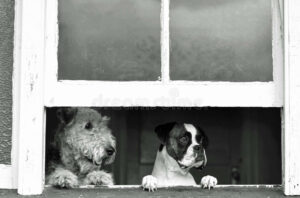 The anxiety does not stem from any separation.
The anxiety does not stem from any separation.
The separation from the owner is the root cause of this problem.
Crating is an important area to be considered while handling a dog with canine separation anxiety.
Inside a crate, your dog shows anxiety responses and may get injured.
That is exactly why experts recommend using safe places instead of crates. You should never make efforts to offer obedience training to dogs with separation anxiety.
This type of anxiety is not connected with a lack of training or disobedience.
Canine separation anxiety is an issue that occurs when a dog turns excessively attached to his owner. When the owner goes out of home, the dog turns restless, insecure and super-stressed.
As a pet owner, you need to be aware of the symptoms that cause this situation.
A well-thought-out treatment plan needs to be designed and followed to eliminate the anxiety in the dog and make him feel relieved and relaxed.
It may require some time for the pet to recover and you need to be patient with him.
If you are finding it hard to handle a dog with severe canine anxiety, you should seek the help of trained and experienced dog experts to develop and implement systematic desensitization and counter-conditioning plans.
I would really like to hear your thoughts, questions or comments about Dog Separation Anxiety. Does your does have this problem?
You may leave your comments in the section below and I will be more than happy to respond.
All the best!
Barbara
Founder/Creator: Love A Rescue Dog 🐶
lovearescuedog93016@gmail.com
“Saving one animal won’t change the world, but for that one animal, the world changes forever”


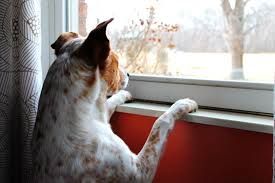
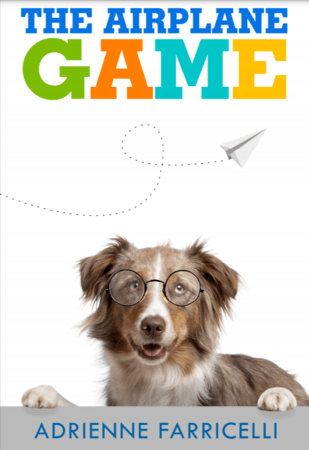
We have rehomed a westie and are making good progress with toilet training as she was a breeding dog and has not lived in a home environment. She has a lovely playful nature which is starting to show. We have 2 significant issues. One is she has bonded with me to the point that she follows me everywhere and has started whimpering if she can’t find me. Secondly, she clearly doesn’t trust people including my husband as she’s not been exposed to men but we are slowly making progress with building trust. Any tips would be great.
Hello Lorraine,
Thank you for taking the time to read and comment on my article Rescue Dogs and Seperation Anxiety.
It is very kind of you to rehome dogs. I think the issue here is that she was used primarily for breeding. She is very protective as a mother should be. She will probably need more time being around your husband and other men to get over her aversion to men. My rescue dog Chance is the same way. He has bonded with me to the point that when my son walks through the house, he growls and barks. When I leave the house, he cries for a bit but sits quietly until I return. I think I will just take some time gaining the trust. Have you husband interact with her more on a daily basis, so she gets used to hime being in the equation and that she can trust him as much as she can you.
Here’s a link to a Free Training Guide that may have some answers for you. Please don’t give up. Stay consistent with what you do and be patient. That really seems to be key.
Hope this helps some.
All the best to you,
Barbara